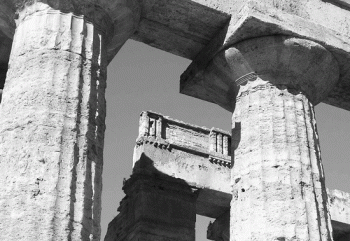American Journal of Archaeology | The Journal of the Archaeological Institute of America
You are here
In Defense of the Ionic Frieze of the Parthenon
October 2009 (113.4)
In Defense of the Ionic Frieze of the Parthenon
This article challenges the suggestion made by various authors that the Ionic sekos frieze of the Parthenon was originally planned as Doric. It examines each piece of evidence in turn and offers alternative explanations. Perhaps the most persuasive argument for an originally Doric frieze is the presence of regulae and guttae on the epistyle crown of the facades. The elements do not, however, continue as expected on the sides of the sekos. Furthermore, the dimensions of the hypothetical frieze would not allow for the usual alignment of a triglyph over the anta return. A Doric frieze would thus be unsuitable for this location. Instead, the Ionic frieze fits better into the height of the entablature, and the length and spacing of its blocks correspond with those of the wall, suggesting that it was planned from the beginning. Rather than representing a change of design, the prominent combination of Doric and Ionic elements in the Parthenon reflects the Ionicization of Attic architecture and its experimentation with new forms in the Classical period.
In Defense of the Ionic Frieze of the Parthenon
By Barbara A. Barletta
American Journal of Archaeology Vol. 113, No. 4 (October 2009), pp. 547–568
DOI: 10.3764/aja.113.4.547
© 2009 Archaeological Institute of America


